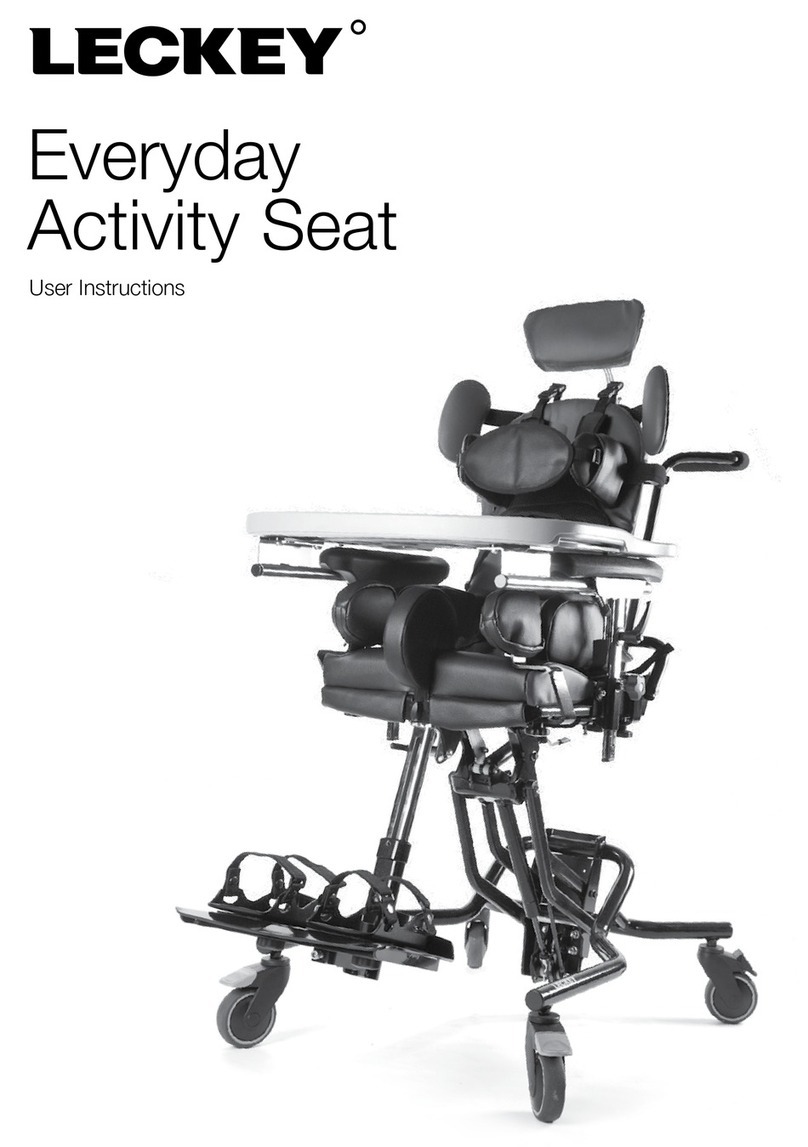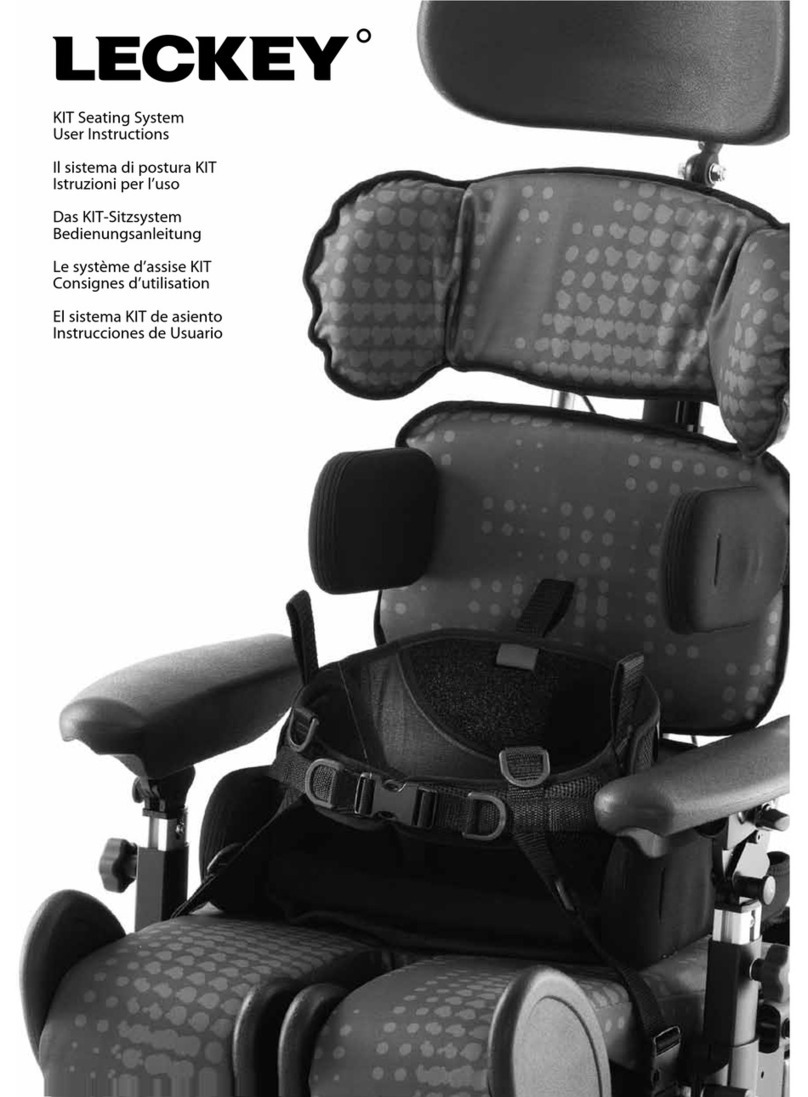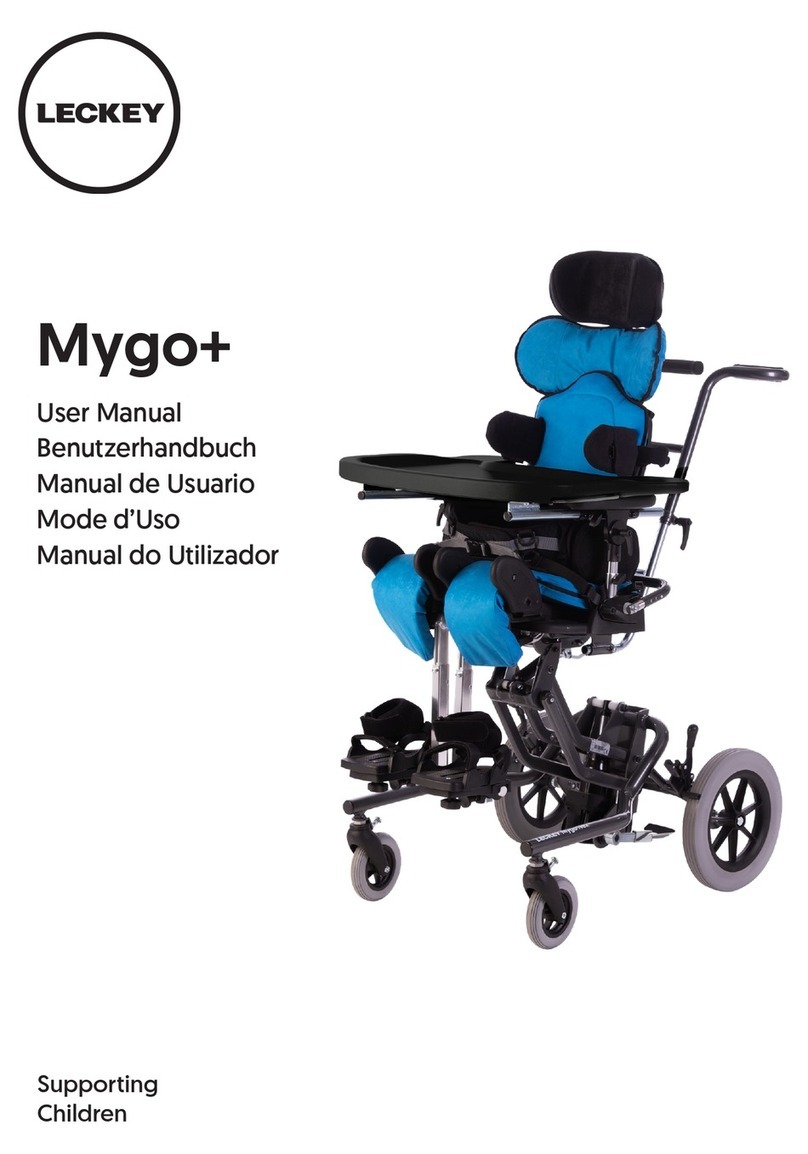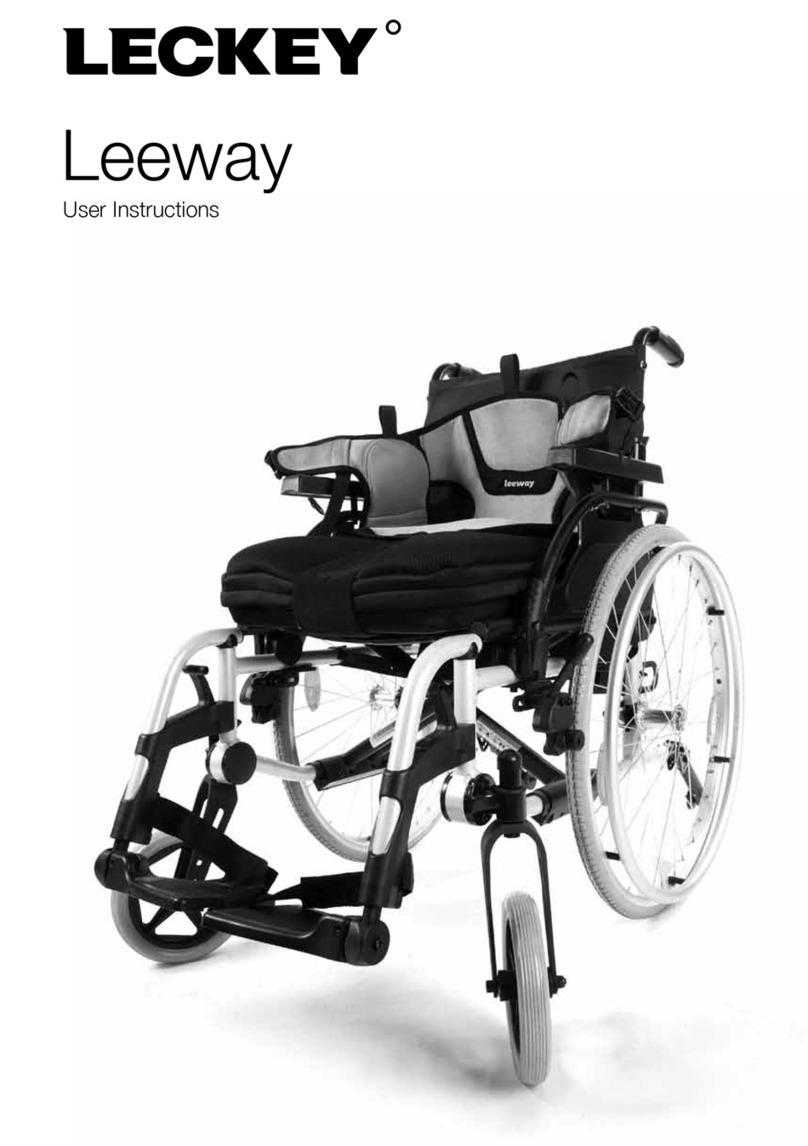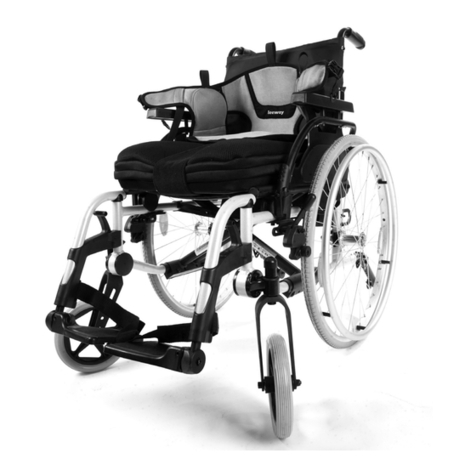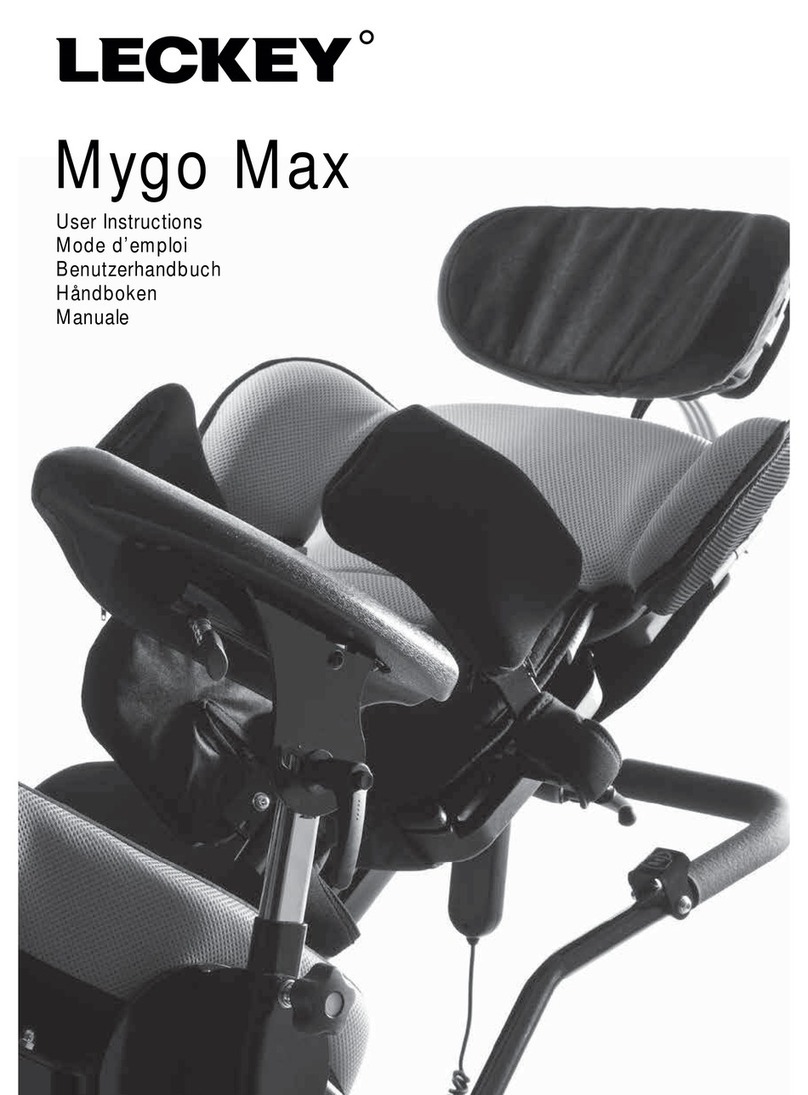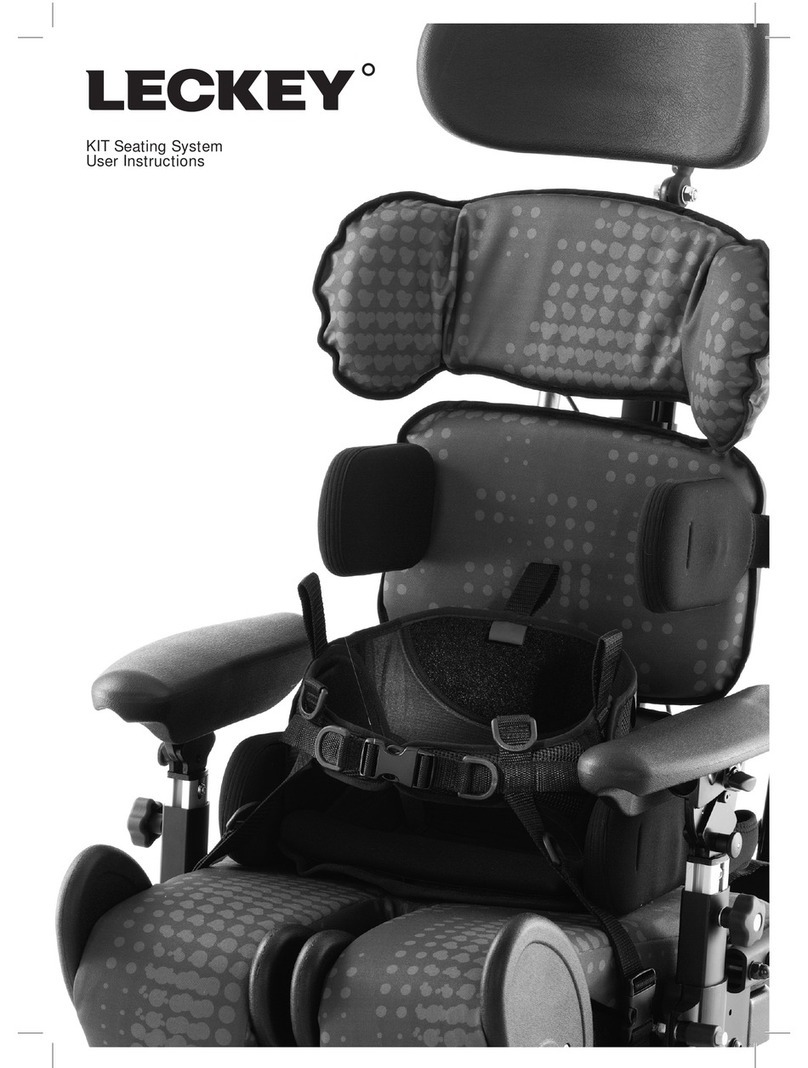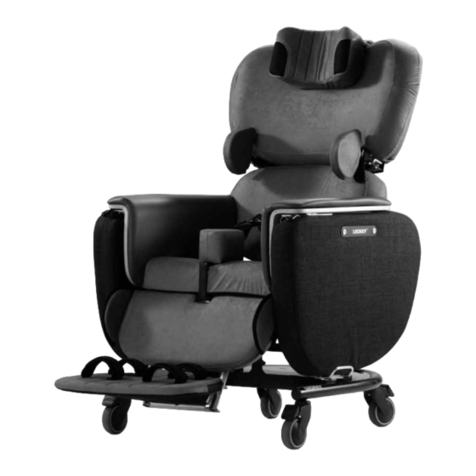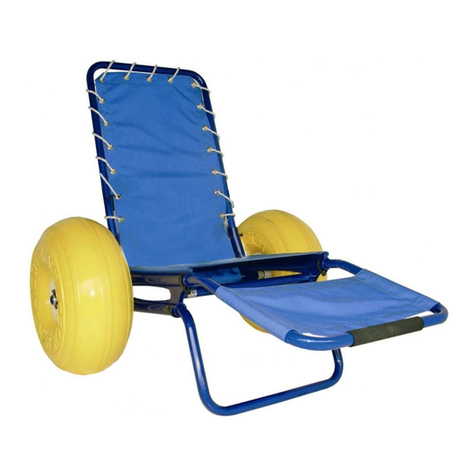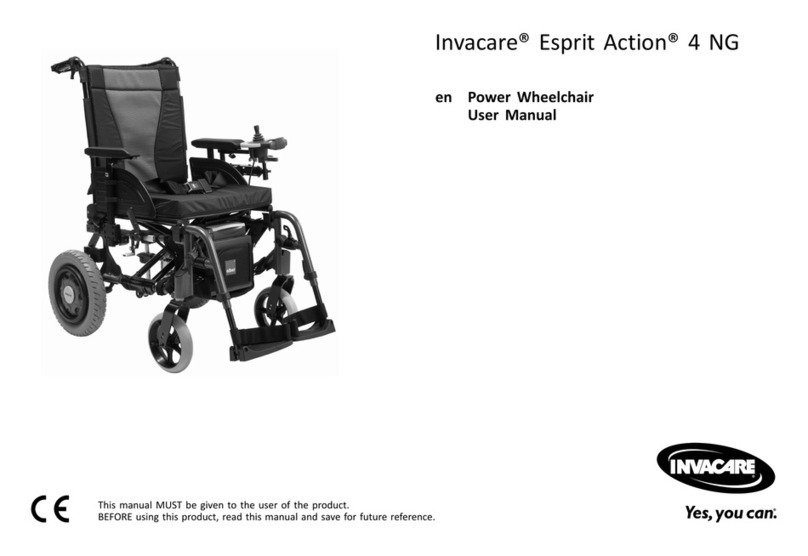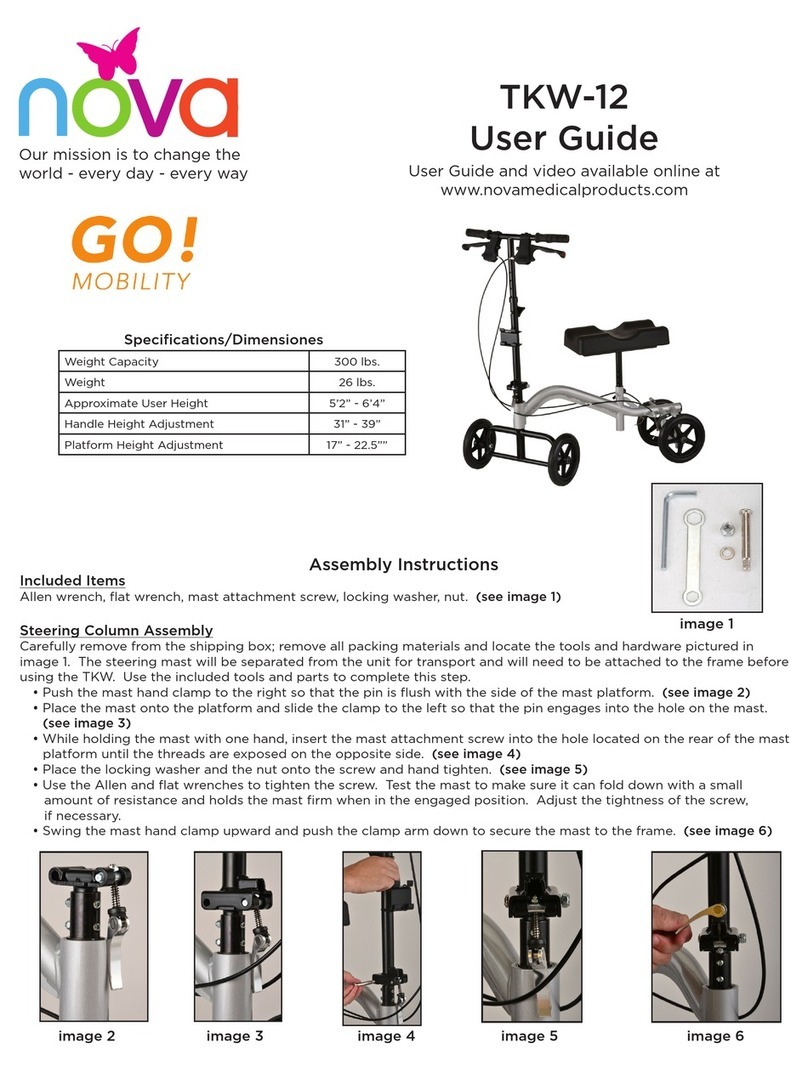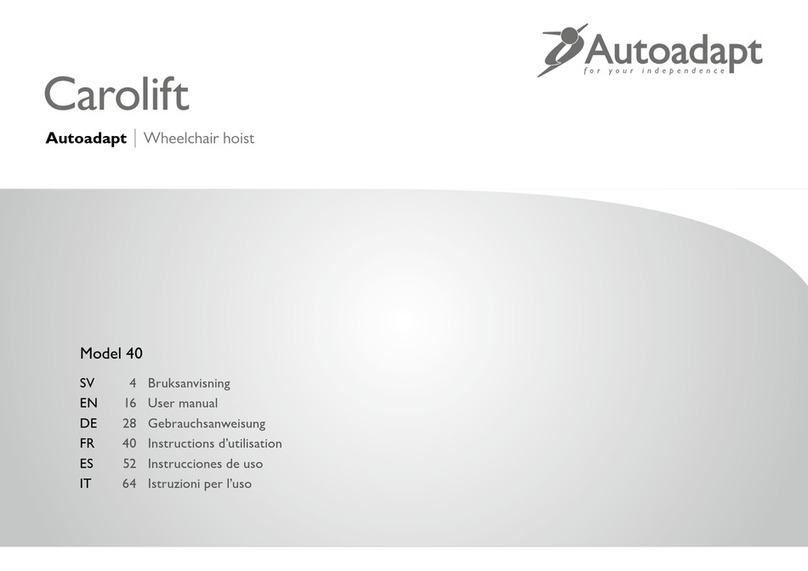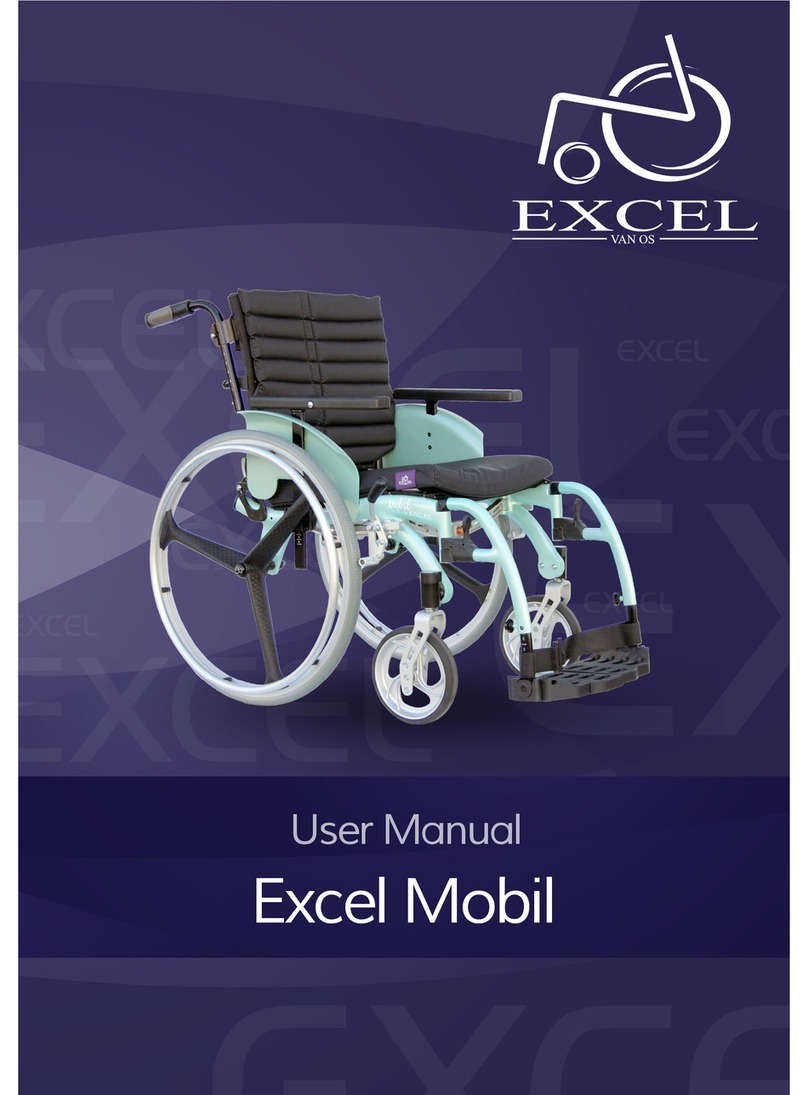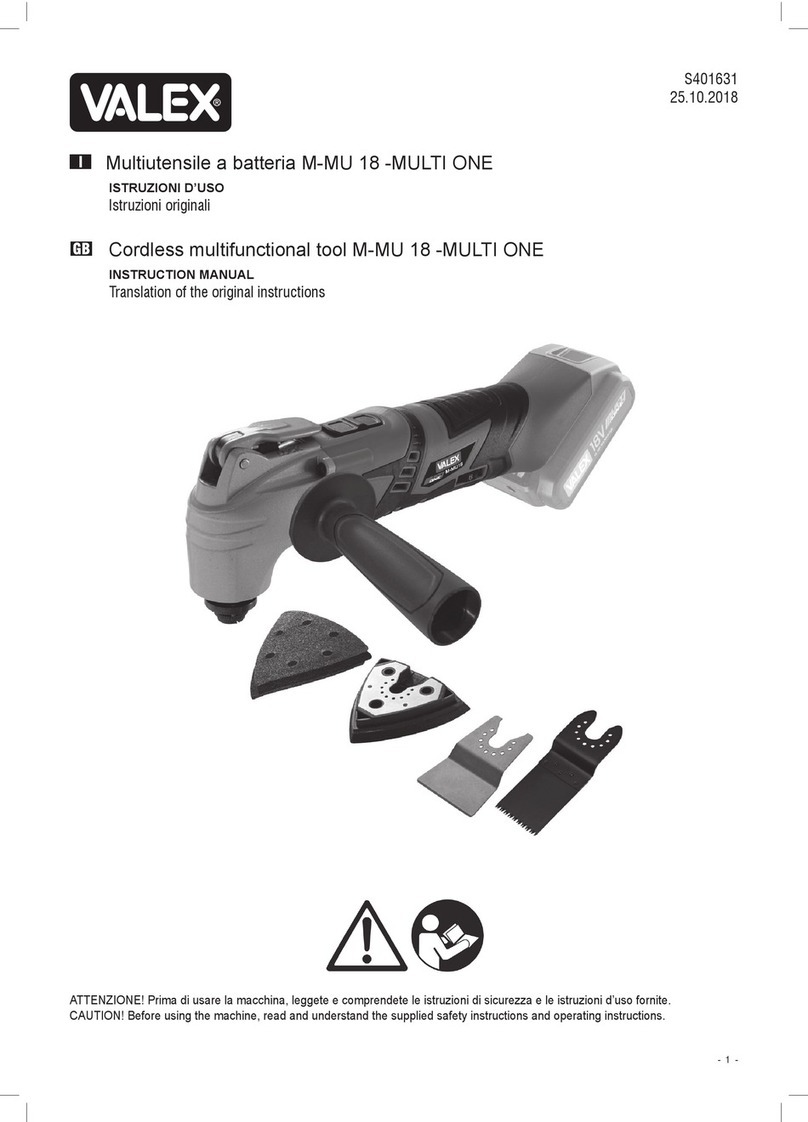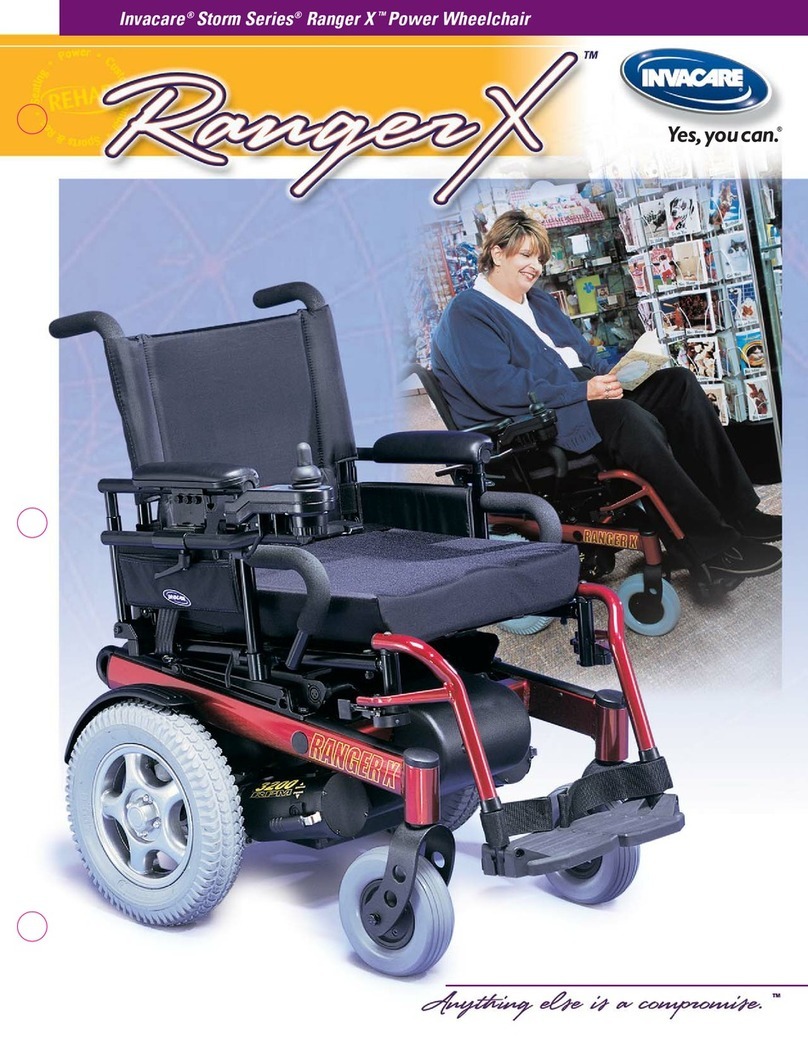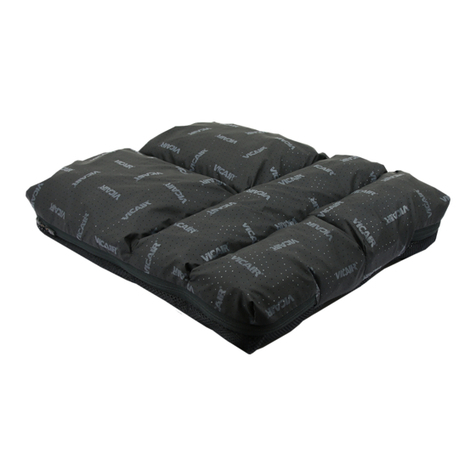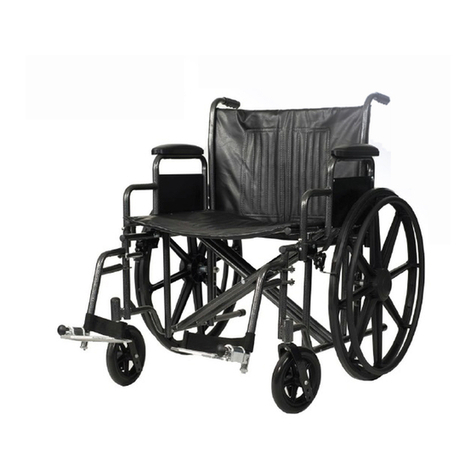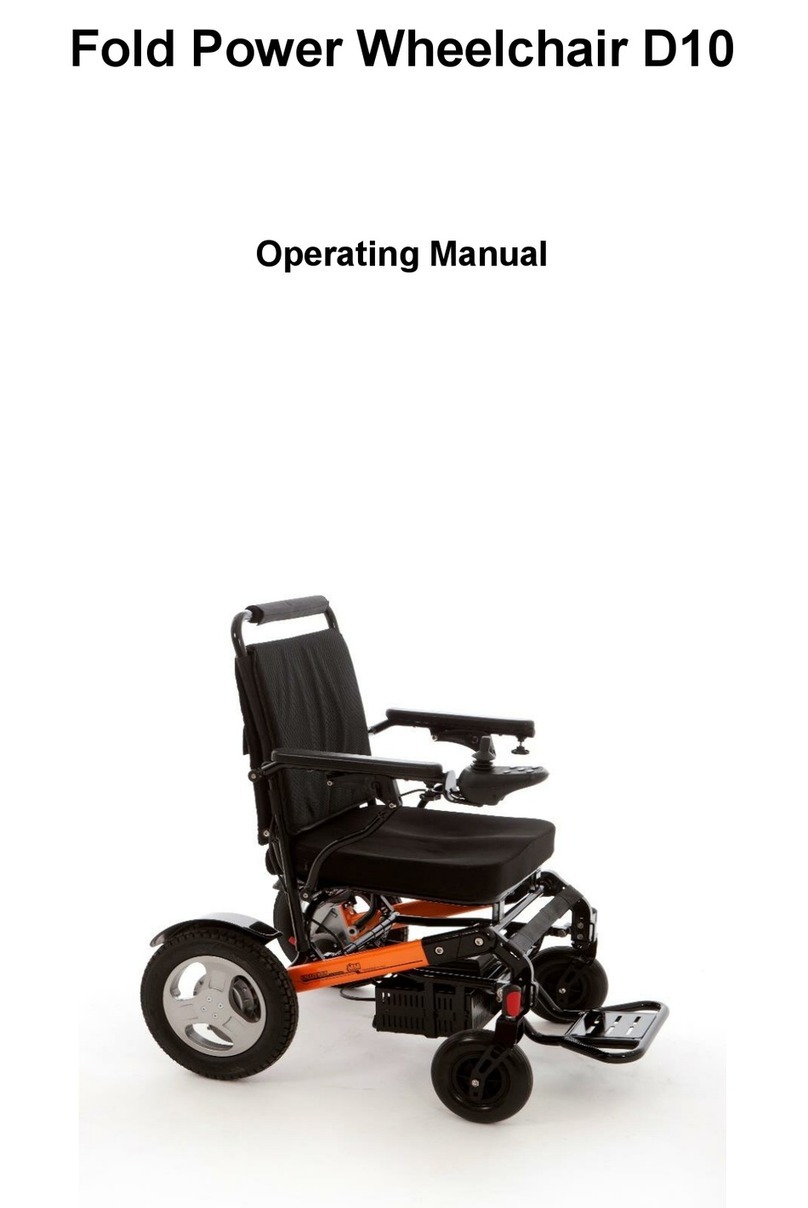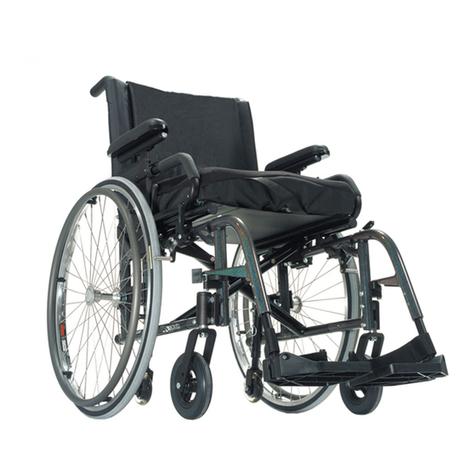1. Intended Use
The Leckey Tour Mobility Base is
designed for use with seating systems
intended for a single user. The mobility
base is designed to be suitable for use
indoors and/or outdoors. It is designed to
provide mobility for persons with disability.
It must be adjusted by an orthopaedic or
rehabilitation dealer to integrate with the
seating system being used.
2. Declaration of Conformity
James Leckey Design Ltd as manufacturer
with sole responsibility declares that the
Leckey Seating and Mobility Systems
conform to the requirements of the
93/42/EEC Guidelines, Medical Device
Regulations 2002 and EN 12182 Technical
aids for disabled persons and test
methods.
3. Terms of Warranty
The warranty applies only when the
product is used according to the
specified conditions and for the intended
purposes, following all manufacturers’
recommendations (also see general terms
of sales, delivery and payment). A two
year warranty is provided on all Leckey
manufactured products and components.
1. Please read the instructions for use
before using this product.
Familiarise yourself with the mobility base
and your chosen seating system on level
ground to avoid potentially dangerous
situations.
2. Park the mobility base on level ground
wherever possible. If parking on a slope is
unavoidable ensure the anti-tipper is in a
functional position.
3. When reaching for objects in front, to
the side or behind the occupant make sure
the occupant does not lean too far out of
the seating system as this may cause the
mobility base to tilt or tip over.
4. Treat your mobility base with care. Do
not drive into or against obstacles without
slowing down.
5. The anti-tipper is designed to prevent
the mobility base with user from tipping
over backwards. The anti-tipper should
not be used to support the base with rear
wheels removed.
6. Do not go up or down stairs without
assistance from another person. If
available make use of ramps and lifts.
In the absence of a ramp or lift, then 2
people should carry the base with seating
system over the obstacle. If only 1 helper is
available, the anti-tipper (if fitted) should be
adjusted or removed as to not contact the
steps, therefore avoiding a potential fall.
Replace anti-tipper afterwards.
7. When lifting the mobility base,
ensure that it is held by firmly attached
components and not by loose or moving
parts.
8. Ensure height adjustable push handle
clamping levers are firmly tightened.
9. Ensure brakes are applied when
stationary on uneven ground and during
transfer.
10. Ensure any tilt and brake cables do not
interfere with any moving parts e.g. wheels.
11. Occupants should be secured with
suitable safety straps, belts or harnesses
at all times.
12. In some combinations of settings
the foot supports may interfere with
the castors. In this case adjust the
settings so that this does not happen as
the manoeuvrability of the base will be
impaired.
13. When using the mobility base in public
areas and streets, ensure local traffic
regulations are observed.
14. Be careful when adjusting the seat
base to avoid finger injuries.
15. Maximum load capacity including
seating system is 110Kg.
16. Ensure that screws are tightened after
adjustment.
4. Product History Record
Your Leckey product is classified as a
Class 1 Medical Device and as such
should only be prescribed, set up or
reissued by a technically competent
person who has been trained in the use
of this product. Leckey recommend that
a written record is maintained to provide
details of all set ups, reissue inspections
and annual inspections of this product.
5. Product Training Record
(Parents, Teachers & Carers)
Your Leckey product is classified as a
Class 1 Medical Device and as such
Leckey recommends that parents,
teachers and carers using the equipment
should be made aware of the following
sections of the user manual by a
technically competent person:
Section 6
Safety Information
Section 9
Instructions for Securing the Mobility Base
in a Motor Vehicle
6 Safety Information
